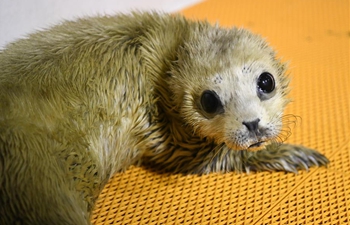BEIJING, April 3 (Xinhua) -- Chinese scientists have developed a new method to improve wound dressings by enhancing their capacity for promoting blood coagulation and wound healing.
Effective bleeding control and wound healing are very important and can be lifesaving. However, traditional wound dressings with structural and functional defects are relatively weak in controlling bleeding and promoting regeneration of functional tissues.
Scientists from the Institute of Biophysics under the Chinese Academy of Sciences and the University of Science and Technology Beijing have changed the traditional structure of wound dressings by creating a kind of sponge with a three-dimensional layered nanofiber sponge.
This sponge has a layered nanofiber structure, which increases the interfacial interaction between the sponge and blood cells to control bleeding.
It is both highly compressible and resilient, providing tamponade for deep wounds and creating a dynamic microenvironment to regulate cellular behavior.
Experiments using mice with skin defects have shown that the sponge could effectively accelerate wound healing and reduce scar formation.
According to Professor Qin Yan, one of the researchers, there is a great need for improvements in wound dressing materials to effectively prevent skin defects.
"The 3D nanofiber sponge has good elasticity, high permeability and fluid absorption ratio. It can promote the regeneration of functional dermis and the restoration of fat cells during the early repair phase," Qin said.
This layered 3D nanofiber sponge design is easy to produce and has great potential for future clinical application as wound dressings.
The research was published online in the journal Biomaterials.
















